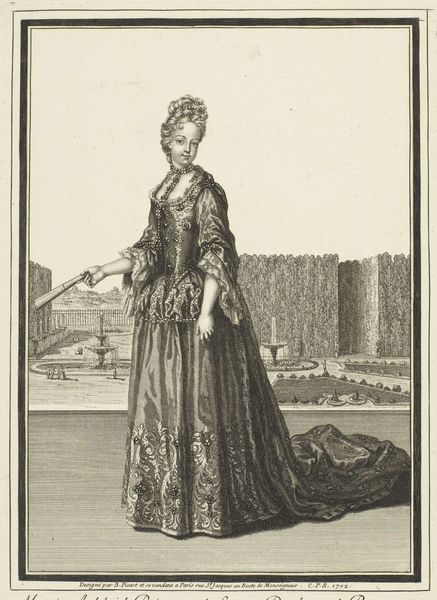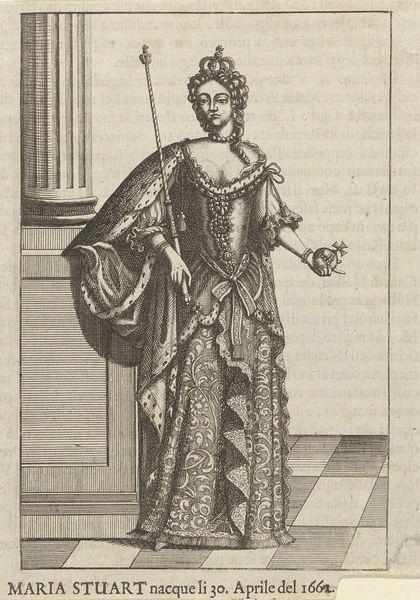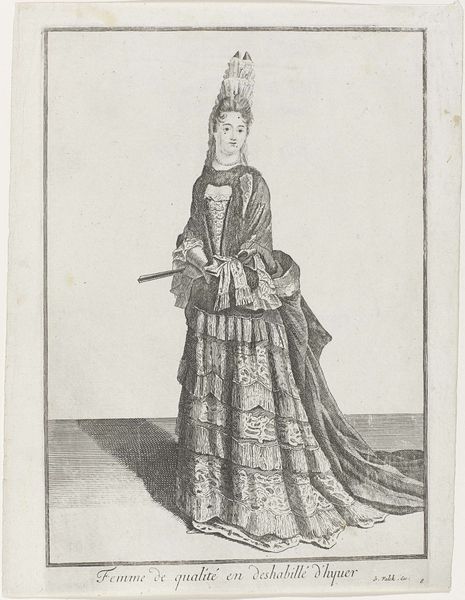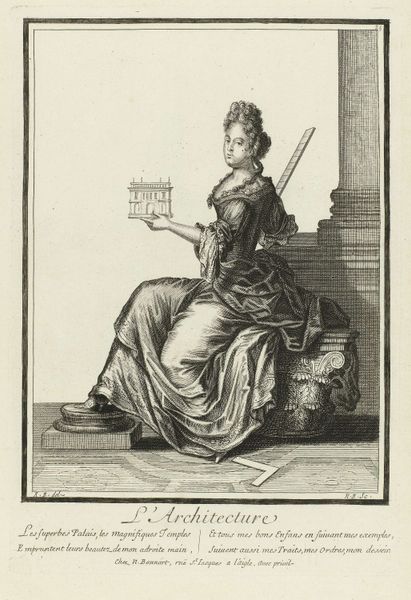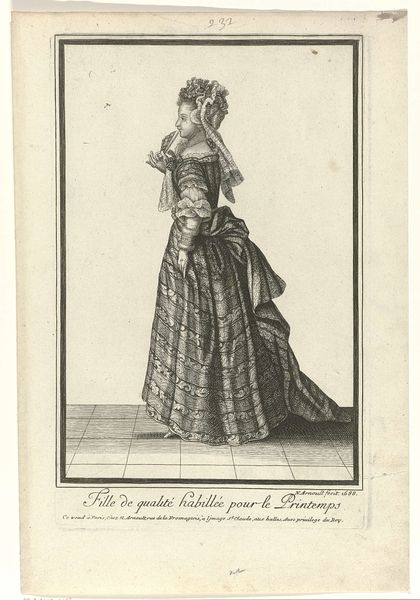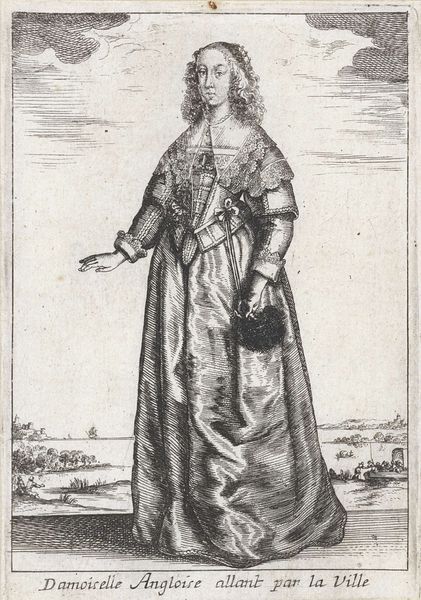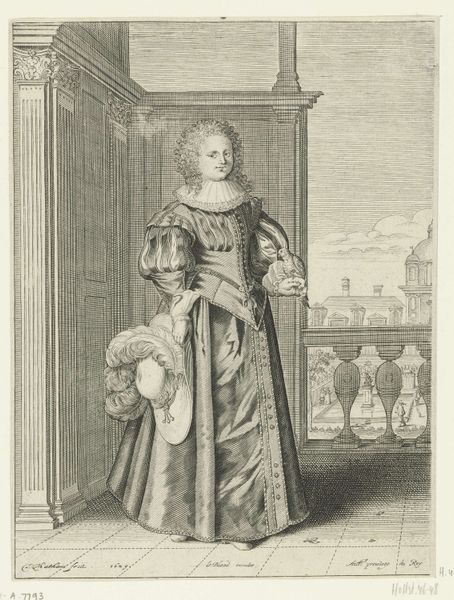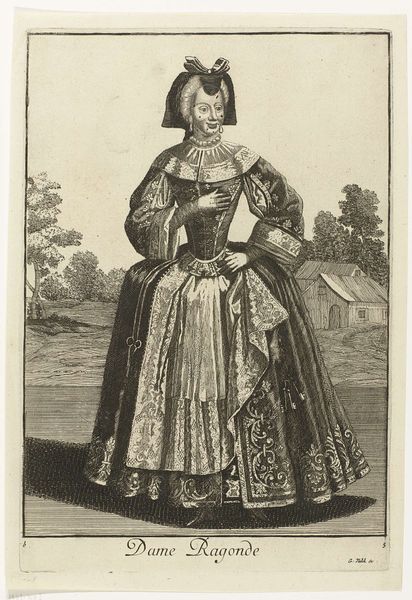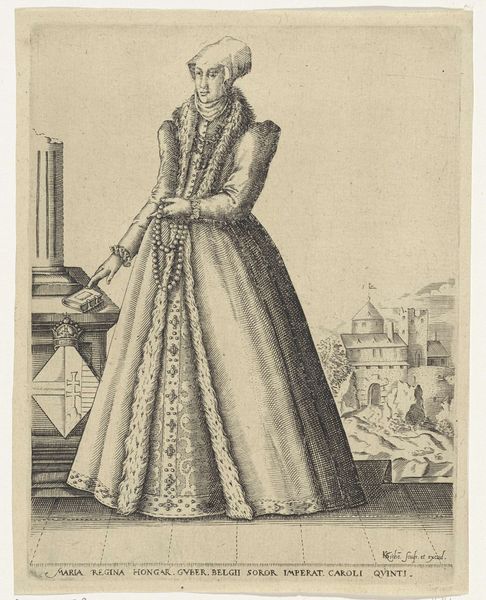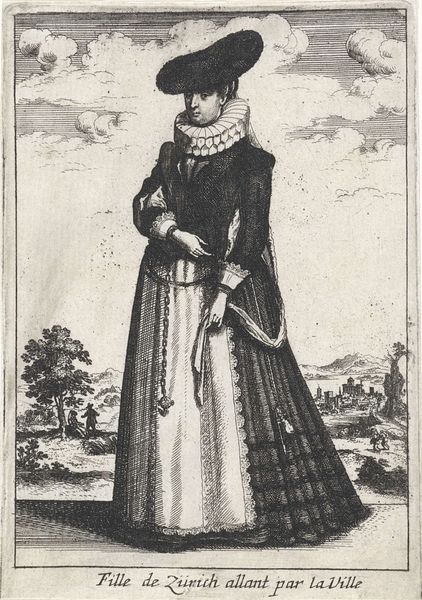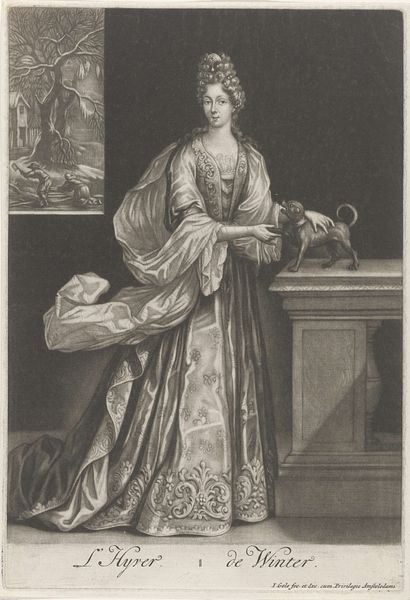
print, engraving
#
portrait
#
baroque
# print
#
old engraving style
#
traditional media
#
figuration
#
history-painting
#
engraving
Dimensions: height 310 mm, width 203 mm
Copyright: Rijks Museum: Open Domain
Curator: This print, dating from 1702, is titled "Portret van Marie Louise van Savoye, koningin van Spanje," and it's the work of Bernard Picart. Editor: It has an incredible level of detail! All the fine lines, the patterning of the dress – I am curious how that's actually created in an engraving like this. Curator: The technique certainly speaks to the status of printmaking as a medium for disseminating power and influence at the time. Here, we see Marie Louise depicted with symbolic grandeur, embodying the aspirations and ideals of the Spanish monarchy during the early 18th century. What is significant to recognize here is that Marie Louise's life and the construction of her identity was entirely based upon and controlled by patriarchal figures and power. Her destiny was mapped from her childhood through her strategic political marriage, resulting in Spain becoming tied up within French colonial endeavors. Editor: You're right, that fabric would have been woven by skilled artisans, representing considerable material value and labor. How the details of her status manifest across all aspects of her portrayal, the buildings in the backdrop, the quality of dress. All this information comes out from how the print was manufactured and who made it. Curator: Exactly. Her clothing, the architecture in the background – likely representing the El Escorial palace - together project a very specific image of regal authority, designed to legitimize the Bourbon dynasty's claim to the Spanish throne following the War of the Spanish Succession. One almost feels sympathy for the burdens she carried. Editor: I am thinking now, about where she would be actually positioned and how many people would have come into contact with each step of creating just a print like this. The production and access were shaped by this vast apparatus, reaching even here and to this moment. Curator: By examining the historical and political dimensions of this print, we can reveal much of the negotiations for control of Spain in the early modern world. Editor: Focusing on the materiality reminds us about how images can reveal all types of social relations and that they also need a foundation for this visibility.
Comments
No comments
Be the first to comment and join the conversation on the ultimate creative platform.
